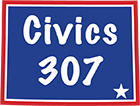Even the most experienced observers of the Legislature get lost in the maze of changes to bills going through the process. Amendments are considered on first reading, referred to as Committee of the whole, Second Reading and Third Reading.
The amendments reference page numbers and line numbers on the original introduced bill and on previous amendments. The changes take the form of deleting complete lines, deleting words within a line, inserting words in a line or even inserting entire sections. When deleting or inserting sections, it is usually necessary to renumber Sections, subsections or romanettes as appropriate to retain numerical flow. Subsequent amendments can impact both original language or prior amendments. The complexity of following the changes increases exponentially with the number of amendments and how extensive are the changes.
House Bill 1001 in the 2021 Special Session is a prime example of how multiple amendments can make the bill all but incomprehensible to the the casual (and not so casual) observer. Language inserted from one amendment can be removed in whole or part by another. Subsequent amendments may insert language into words inserted by a previous. A fully annotated (engrossed) version of the bill including all adopted amendments through Second Reading in the House can be found under Bill Tracker as HB1001 through 2nd Reading.
On that document, there are 10 adopted amendments incorporated into the bill as it was originally written. Each are assigned a different color and changed to BOLD where language is inserted or strikethrough if deleted. In one case, a later amendment deleted previously inserted language completely. In that case, the change is noted.
This is an unusually complex result for a non-budget bill but serves as a good example on the difficulty that legislators also encounter in understanding the impact of amendments.
After any amendments from Third Reading and IF the bill is passed in the first house, all adopted amendments are engrossed (incorporated) into a “clean” version that becomes the basis for the process beginning again in the second house.
